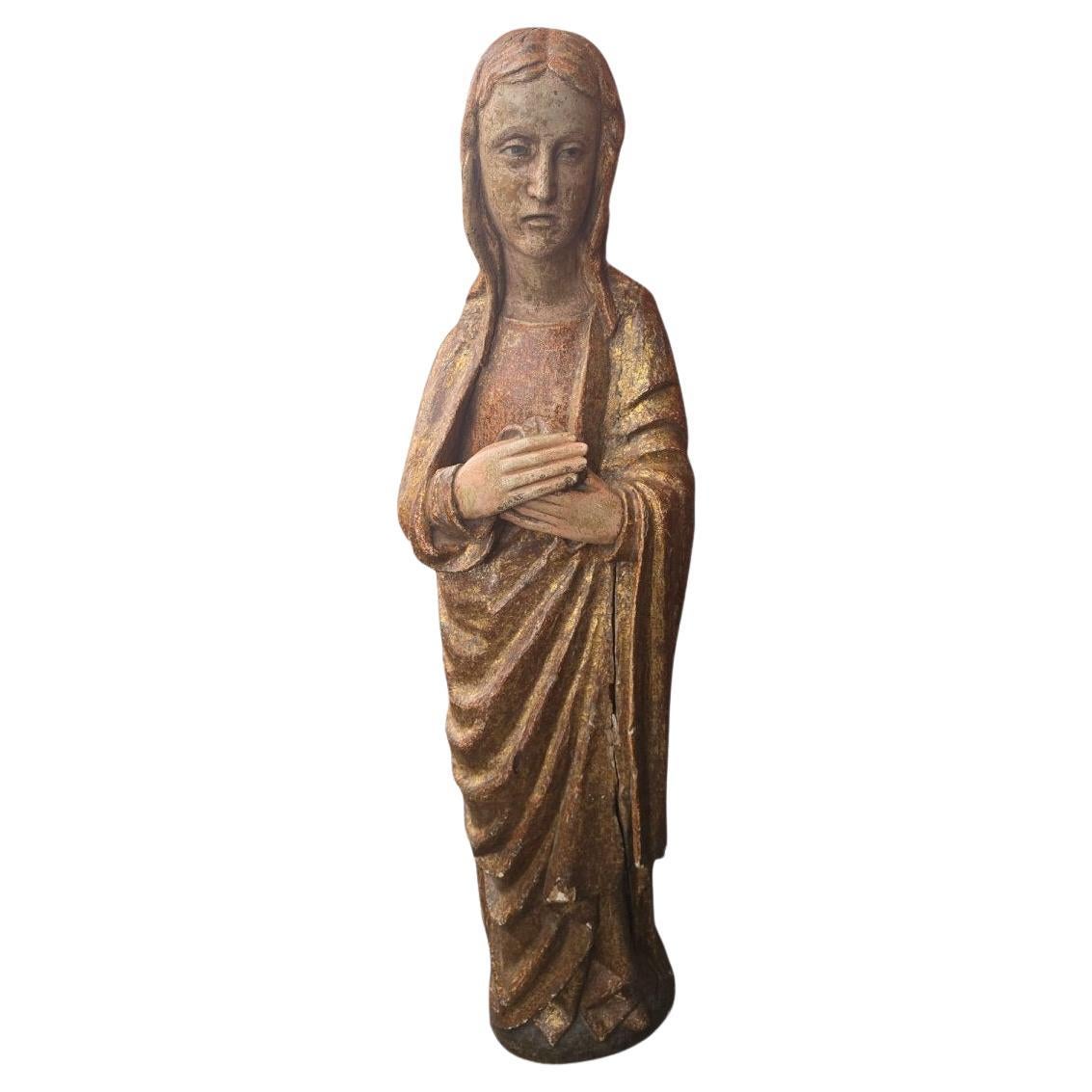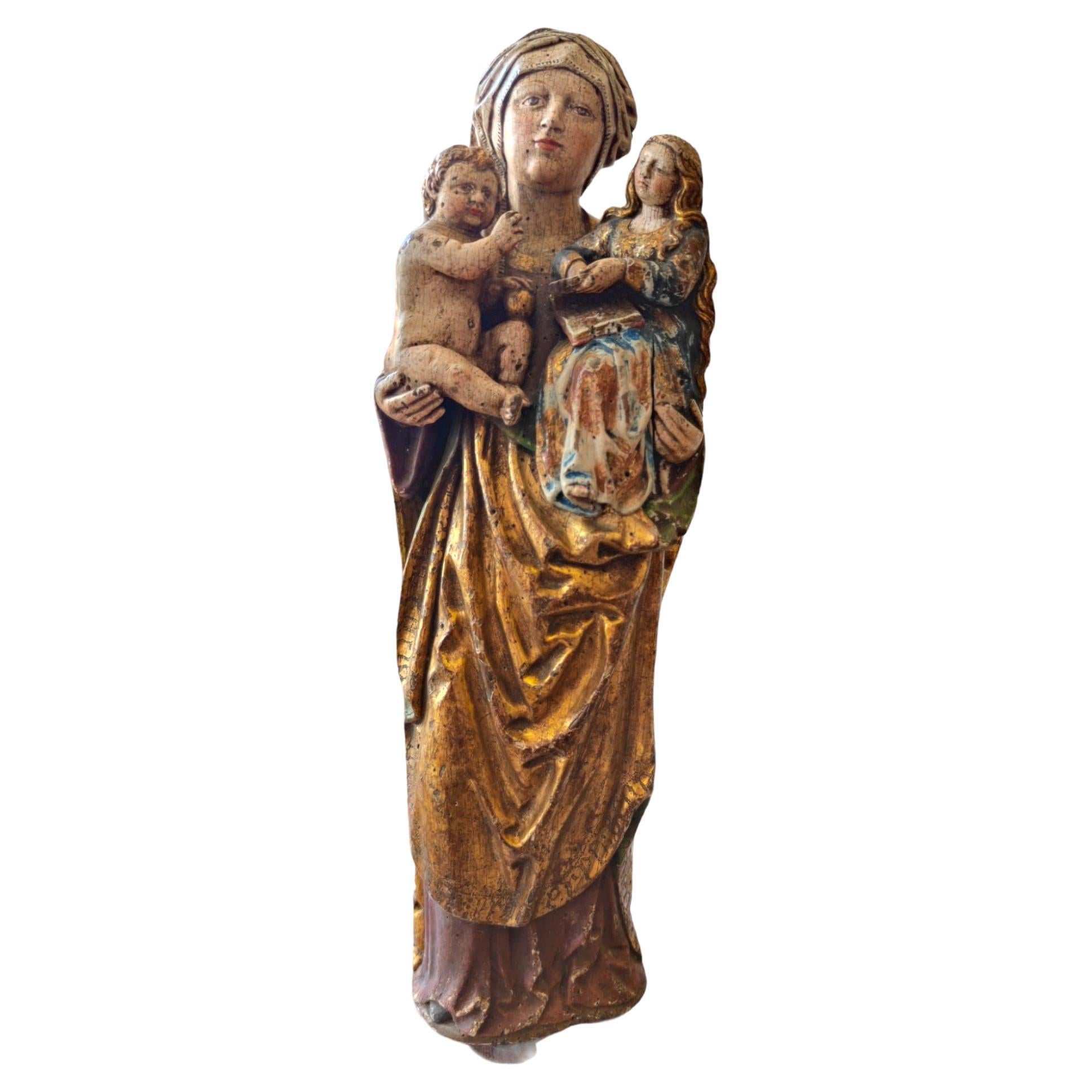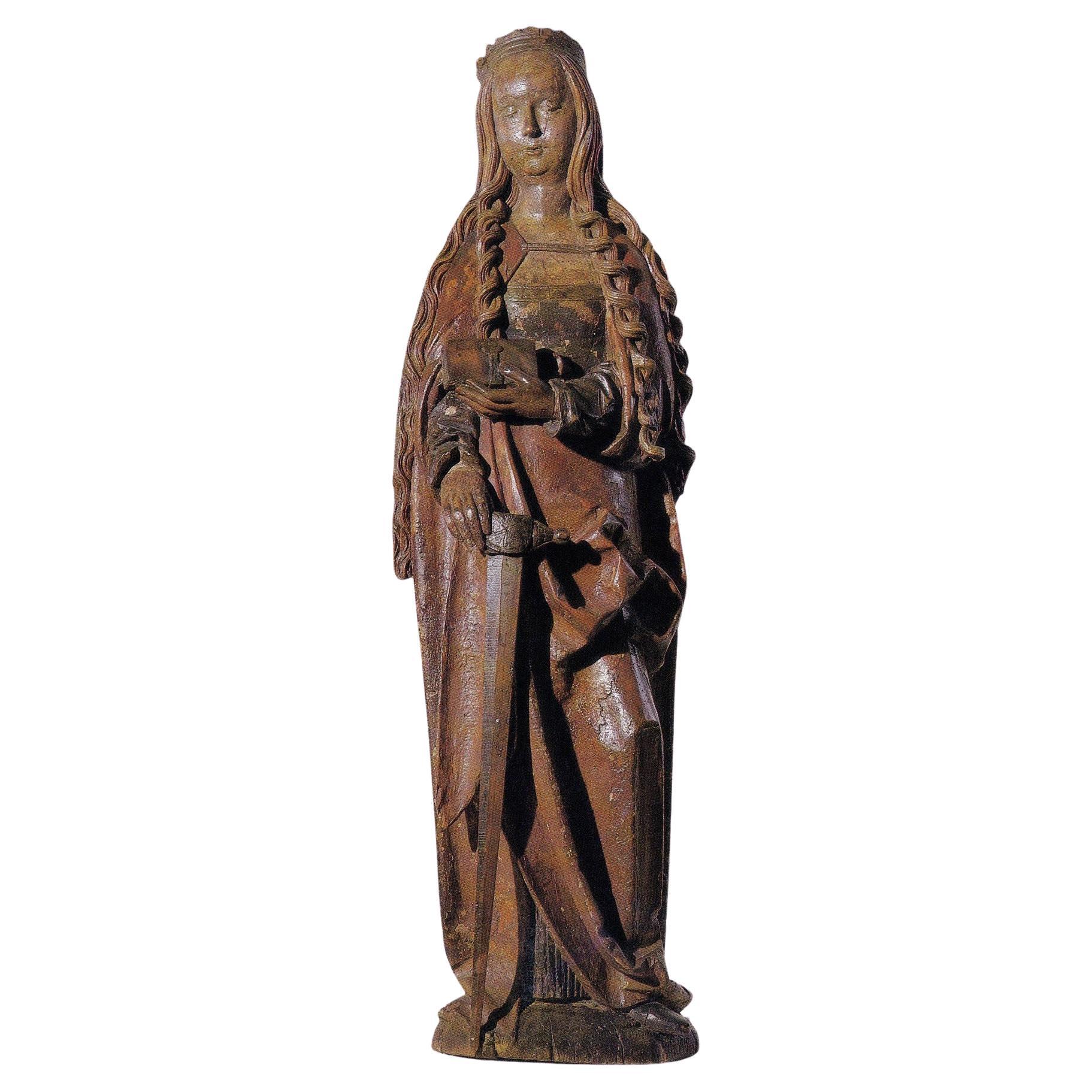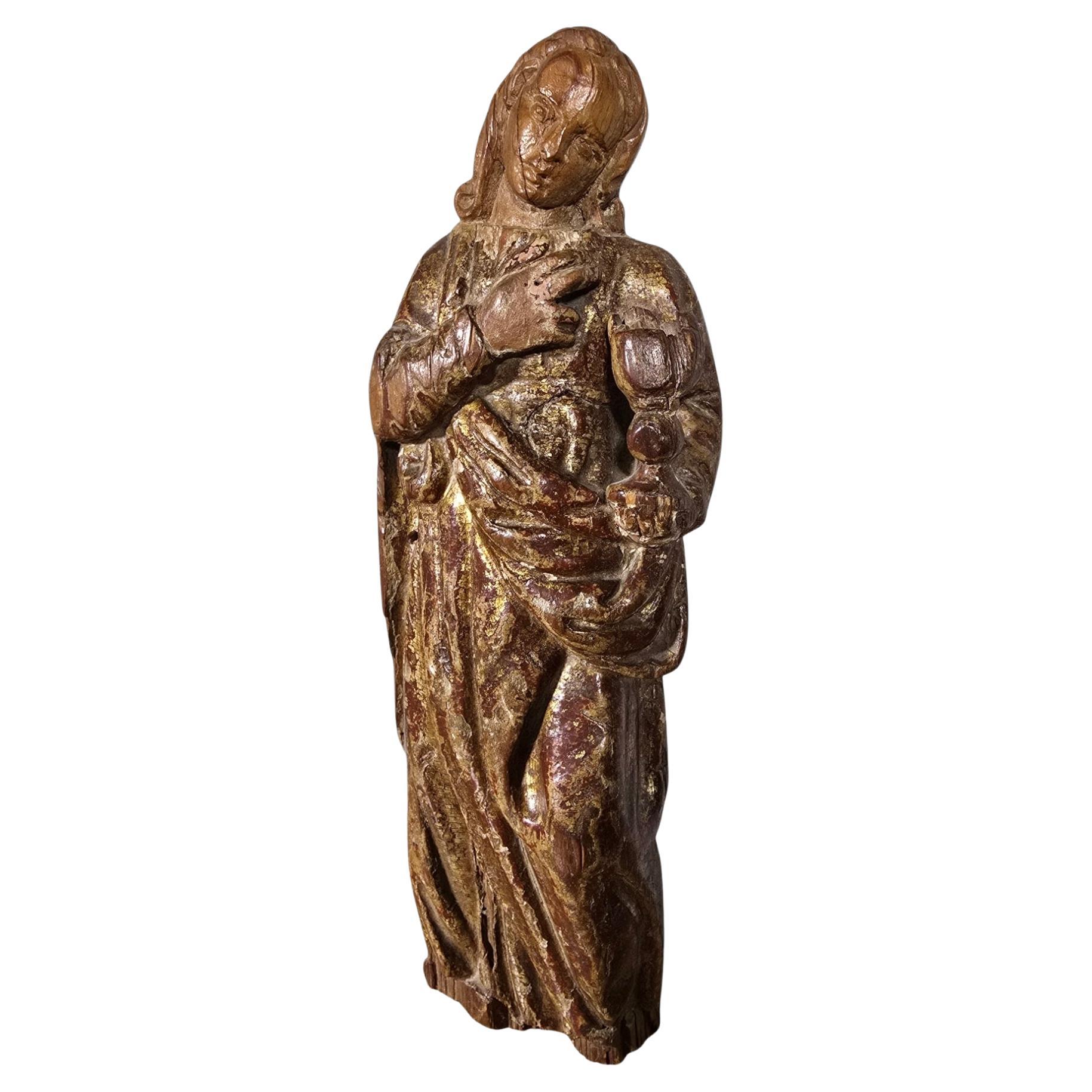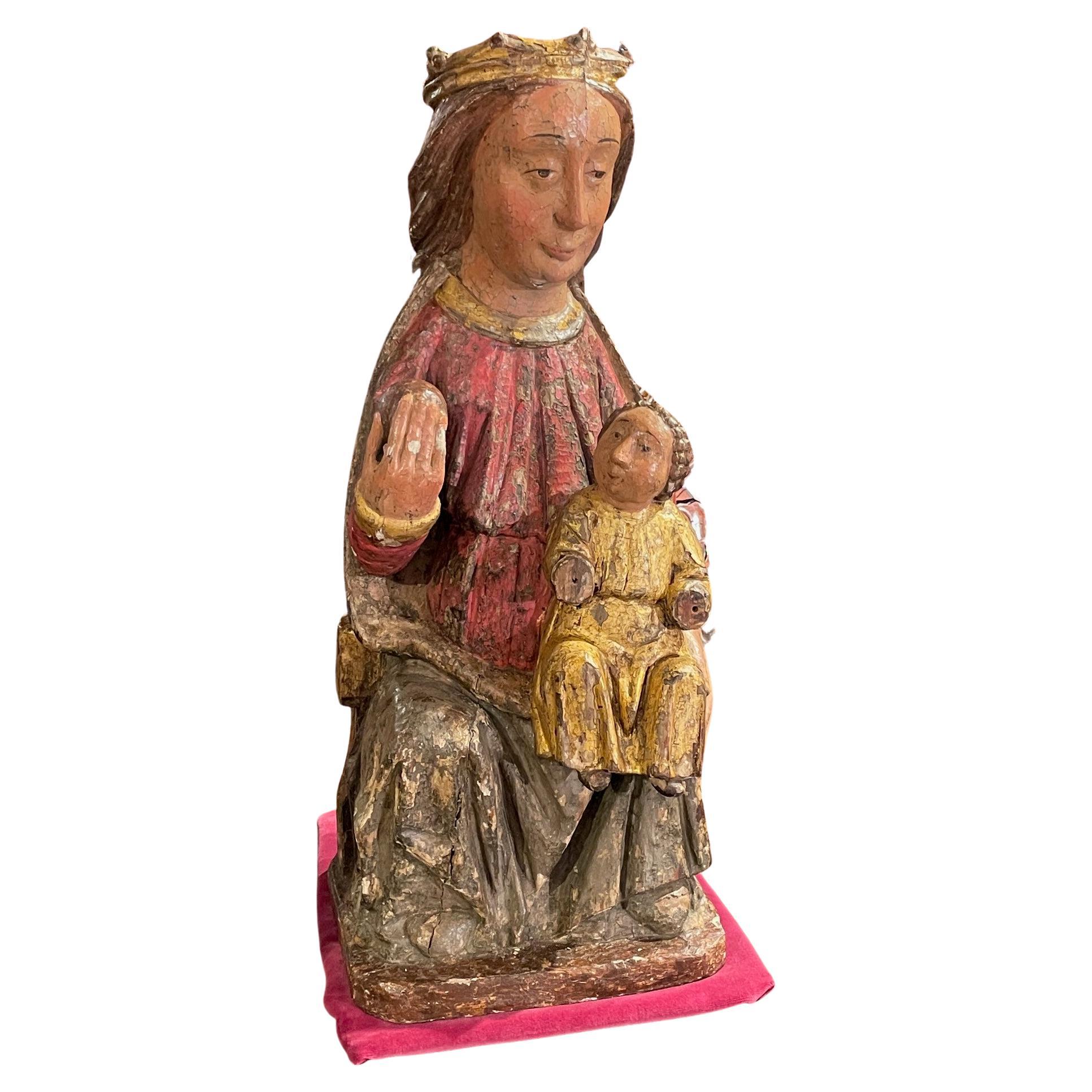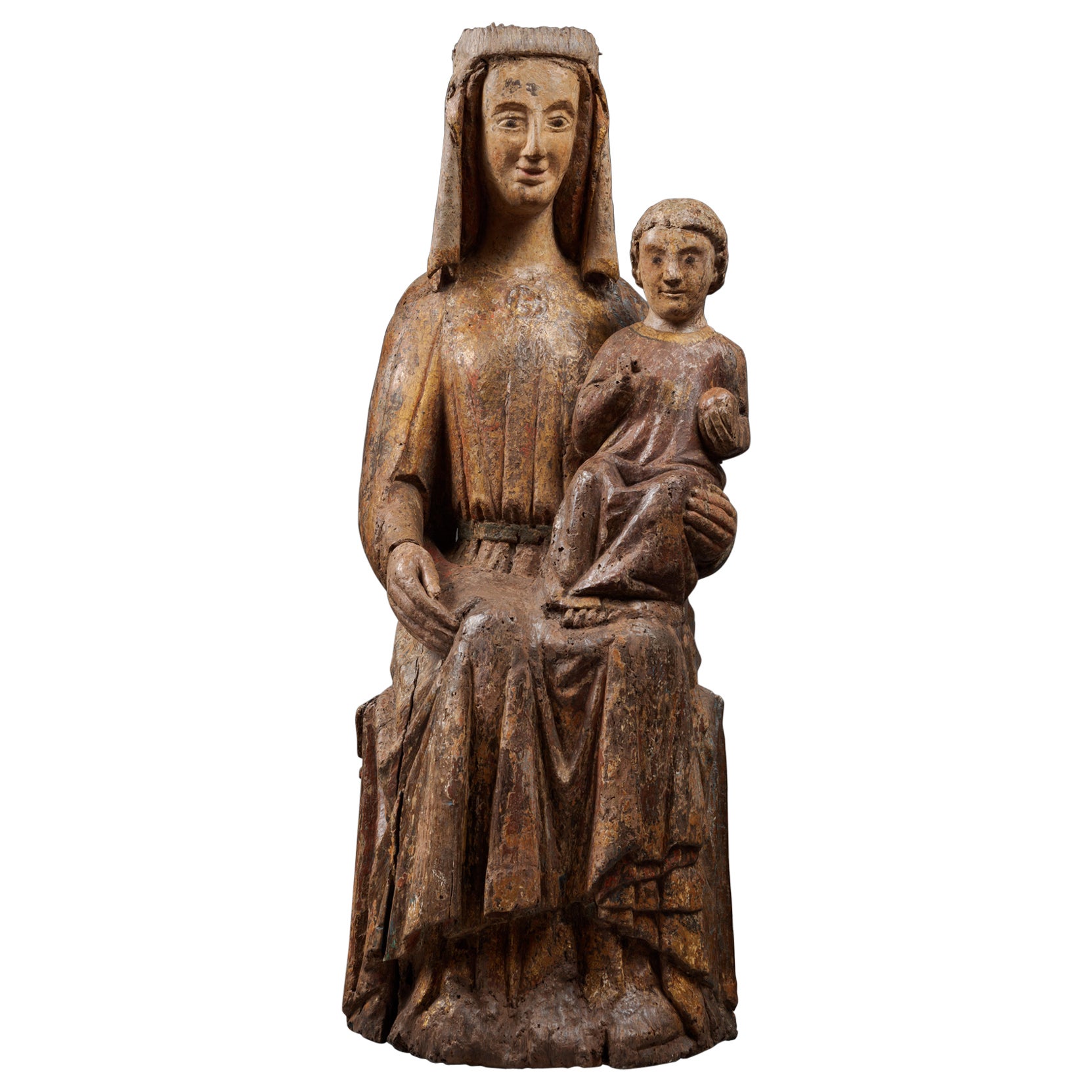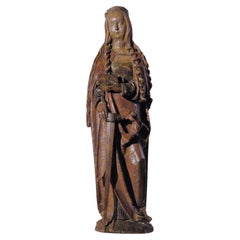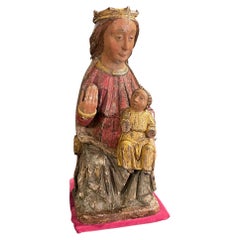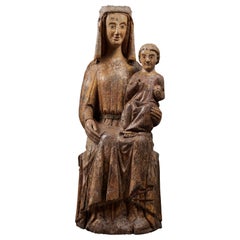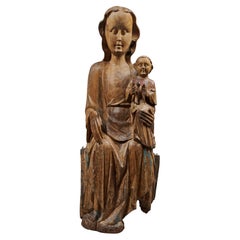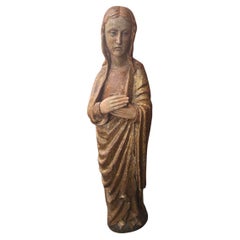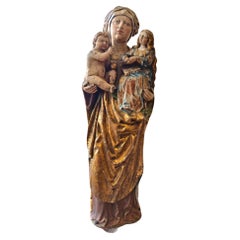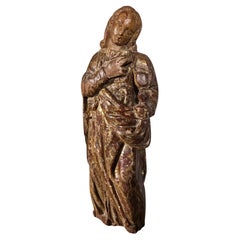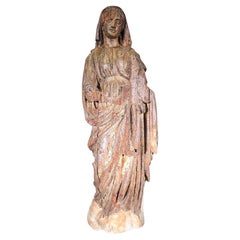Want more images or videos?
Request additional images or videos from the seller
1 of 5
Virgin of Calvary
$47,878.16
£35,522.96
€40,000
CA$66,750.06
A$72,370.81
CHF 38,139.27
MX$880,099.72
NOK 474,513.06
SEK 448,730.24
DKK 304,594.90
About the Item
VIRGIN OF CALVARY
ORIGIN : ITALY
PERIOD : SECOND HALF 13th CENTURY
Height : 75 cm
Length : 19 cm
Depth : 13 cm
Polychrome wood carved in the round
This rare sculpture of a Virgin of Calvary originally belonged to an ensemble depicting the Crucifixion. The Virgin would be accompanied by a sculpture of the apostle John, both flanking the Christ. Depictions of Joseph of Arimathea and Nicodemus could complete the ensemble.
The portrayal of the Descent from the Cross had to be a touching and moving scene for the viewer. Quite rare during the 10th and 11th centuries this particular scene of the Passion was very much in favour during the 12th century before other scenes took over in turn.
Mary is standing with her head slightly tilted to her right shoulder. In a gesture of intercession she raises her left hand – note the long and delicate fingers – towards the missing Christ while with her right hand she holds her cloak around her elbow. Those calm and restrained movements break with the hieratism of Romanesque sculpture. It shows the desire of the sculptors from this second half of the 13th century to bring life to their work.
Mary’s sad eyes and half-opened mouth mark her grief.
She wears a tunic with a cloak covering her head and straight shoulders. Along her body the cloak breaks in curved folds.
This pensive Virgin, humble and delicate with her realistic features shows a new spirit in sculpture that would then evolved towards Gothic. Her long fingers, the curved folds of her cloak locate this artwork at the crossroad of the Romanesque and Gothic periods. The Virgin of Calvary is a remarkable example of the work of Italian sculptors from the third quarter of the 13th century.
- Dimensions:Height: 29.53 in (75 cm)Width: 7.49 in (19 cm)Depth: 5.12 in (13 cm)
- Materials and Techniques:
- Period:
- Date of Manufacture:Second Half 13th Century
- Condition:
- Seller Location:Saint-Ouen, FR
- Reference Number:1stDibs: LU3115332492762
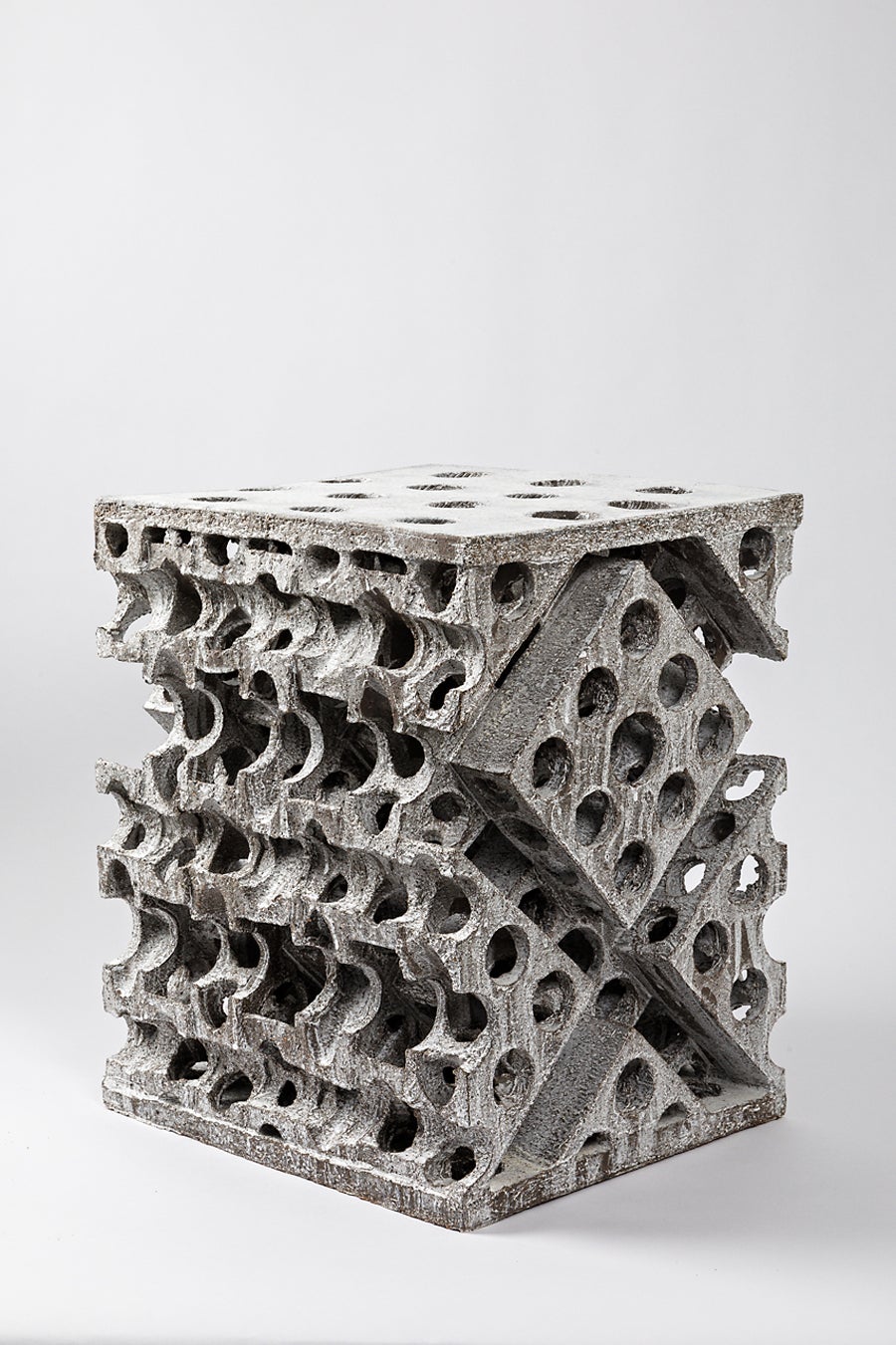
About the Seller
5.0
Vetted Professional Seller
Every seller passes strict standards for authenticity and reliability
Established in 2016
1stDibs seller since 2017
199 sales on 1stDibs
Typical response time: 3 hours
- ShippingRetrieving quote...Shipping from: Paris, France
- Return Policy
Authenticity Guarantee
In the unlikely event there’s an issue with an item’s authenticity, contact us within 1 year for a full refund. DetailsMoney-Back Guarantee
If your item is not as described, is damaged in transit, or does not arrive, contact us within 7 days for a full refund. Details24-Hour Cancellation
You have a 24-hour grace period in which to reconsider your purchase, with no questions asked.Vetted Professional Sellers
Our world-class sellers must adhere to strict standards for service and quality, maintaining the integrity of our listings.Price-Match Guarantee
If you find that a seller listed the same item for a lower price elsewhere, we’ll match it.Trusted Global Delivery
Our best-in-class carrier network provides specialized shipping options worldwide, including custom delivery.More From This Seller
View AllSaint Catherine of Alexandria
Located in Saint-Ouen, FR
SAINT CATHERINE OF ALEXANDRIA
ORIGIN : SWABIA, ULM REGION
PERIOD : ca. 1510-1520
Height : 118 cm
Length : 39 cm
Depth : 17 cm
Limewood...
Category
Antique 16th Century Figurative Sculptures
Materials
Wood
Virgin and Child in Majesty
Located in Saint-Ouen, FR
Virgin and child in majesty
Origine: castille
Epoque: early 14th century
Measures: Height: 72cm
Length: 30cm
Depth: 25cm
Polychrome and gi...
Category
Antique 15th Century and Earlier Figurative Sculptures
Materials
Wood
$41,893
Important Virgin and Child in Majesty
Located in Saint-Ouen, FR
Important virgin and child in majesty
Origin : Germany Or Eastern France
Époque : Second Half Of The 13th Century
Height: 104.5 cm
Length: 3...
Category
Antique 15th Century and Earlier Figurative Sculptures
Materials
Oak
Virgin and Child in Majesty with a Bird
Located in Saint-Ouen, FR
Virgin and child in majesty with a bird
Origin: Southern Germany Or Austria
Period: Late 13tth - Early 14th Century
Height : 87.5 cm
Length : 32 cm
Depth : 19 cm
Lime ...
Category
Antique 15th Century and Earlier Figurative Sculptures
Materials
Wood
Virgin and Child in Majesty, also known as "Sedes Sapientae"
Located in Saint-Ouen, FR
VIRGIN AND CHILD IN MAJESTY, ALSO KNOWN AS "SEDES SAPIENTIAE"
ORIGIN : SPAIN, CATALOGNE
PERIOD: EARLY 13th CENTURY
Height : 95 cm
Width : 32 cm
Depth : 28 cm
Softwood
No polychromy
In the middle of the 12th century, the Virgin took her place in churches, seated in Majesty, serving as a throne for her son Jesus. She is then called Sedes Sapientiae, meaning the Throne of Wisdom.
At that time, she is not represented for herself and only exists because she has been designated as Theotokos, the mother of God, at the Council of Ephesus in 431, where the divine nature of Christ was proclaimed from his birth.
The upright and perfectly hieratic bust of this Virgin and Child in Majesty is seated on a throne-bench. She is dressed in a tunic with a rounded neckline and covered with a fine mantle placed on her narrow shoulders. The supple and natural drapery follows the lines of the body.
Large curls frame her face with delicate and regular features, a long straight nose, almond-shaped eyes, and small lips.
She supports the Infant Jesus with her left hand. Like his mother, he is dressed in a long tunic, and his little feet are visible in the folds. He holds a small sphere in his left hand, while with his right hand, he gestures in blessing. The face of Christ bears a strong resemblance to his mother’s one, and he gives a slight smile.
The position of the Child is no longer as hieratic, nor frontal or central as in the early 12th century, but his face still turns towards the faithful.
The 13th century indeed emerges as a period of transition in the artistic domain. The statuary, while retaining certain characteristics still belonging to the habits of the previous century, also develops new formal solutions.
As a result, Mary maintains a hieratic and frontal position, while her son shifts to place himself well to the left on her knee. Similarly, while the Virgin seems perfectly still, Jesus, on the other hand, appears much more animated, especially in the positioning of his hands. His left hand holds the orb, and judging by the raised right arm directed towards the faithful, one can easily imagine that he was making a gesture of blessing.
The influence of the Sedes Sapientiae from previous centuries still seems particularly prevalent in this work.
These few characteristics allow dating this Spanish Virgin...
Category
Antique 15th Century and Earlier Spanish Gothic Figurative Sculptures
Materials
Softwood
Important Sculpture Representing Saint Barbara
Located in Saint-Ouen, FR
IMPORTANT WOOD SCULPTURE REPRESENTING SAINT BARBARA
ORIGIN : NORTHERN FRANCE OR FLANDERS
PERIOD : 16th CENTURY
Height: 103 cm
Length: 40 cm
Depth: 30 cm
Oak wood
Good condition
Saint Barbara was the daughter of Dioscorus who imprisonned her in a tower to prevent her from being corrupted by Christianity. Despite this, she was taught and baptisted by a local priest. According to legend, she proved her faith by carving a third window into the tower, symbolic of the Trinity.
Once her father learned this, he threatened her with his sword. She managed to escape and hide, not before being revealed by a sheperd. She was thrown in jail and tortured, refusing to denounce her faith. Her father forced her up to the mountain’s summit and decapitated her, afterwhich God struck him down by lightning.
Saint Barbara`s following was popularized in the Occident in the 13th century because of the Golden Legend...
Category
Antique 16th Century Figurative Sculptures
Materials
Oak
You May Also Like
Romanesque Sculpture of the Virgin – 15th Century
Located in Madrid, ES
"Romanesque Sculpture of the Virgin – 15th Century"
Period: 15th century
Romanesque
Technique: Carved and polychromed solid wood
Dimensions: 124 x 36 x 17 cm
Impressive Romanesque s...
Category
Antique 15th Century and Earlier Italian Greco Roman Figurative Sculptures
Materials
Wood
15th Century Gothic Virgin
Located in Madrid, ES
15th century Gothic Virgin
Gothic Virgin of the 15th century Virgin in carved and polychrome wood of the 15th century. In its original state, muse...
Category
Antique 15th Century and Earlier Figurative Sculptures
Materials
Wood
$20,946
Large Sculpture of the Virgin Mary from the 16th Century Dimensions: 98x35x25 cm
Located in Madrid, ES
This majestic sculpture of the Virgin Mary, created in the 16 th century, is a unique piece of sacred art that stands out for its impressive detail and the beauty of its form. Crafte...
Category
Antique 16th Century Figurative Sculptures
Materials
Fruitwood
Large Sculpture of the Virgin Mary from the 16th Century Dimensions: 98x35x25 cm
Located in Madrid, ES
This majestic sculpture of the Virgin Mary, created in the 16 th century, is a unique piece of sacred art that stands out for its impressive detail and the beauty of its form. Crafte...
Category
Antique 16th Century Figurative Sculptures
Materials
Fruitwood
18th Century Italian Saint
Located in Seattle, WA
Beautifully carved wood saint , late 18th century , Italy.
Category
Antique 18th Century Figurative Sculptures
17th French Century Iron Figure of The Virgin
Located in Stamford, CT
Wonderful 17th century French Baroque cast iron figure of the Virgin praying. Likely originally part of an outdoor shrine as it has been exposed to the ...
Category
Antique Early 17th Century French Baroque Religious Items
Materials
Iron
More Ways To Browse
13th Century
Romanesque Sculpture
Pompeii Furniture
Porcelain Figural Group
Porcelain Figure Groups
Sculpture Guitar
Sculptures Woman And Man
Woman Glass Sculpture
Antique Amore
Athlete Sculpture
Austin Office Furniture Used
Bronze Figure After Antique
Bronze Musician Sculpture
Carved Articulated
Carved Wooden Figurines
Dancing Maiden
German Wood Figure
Italian Relief Marble
